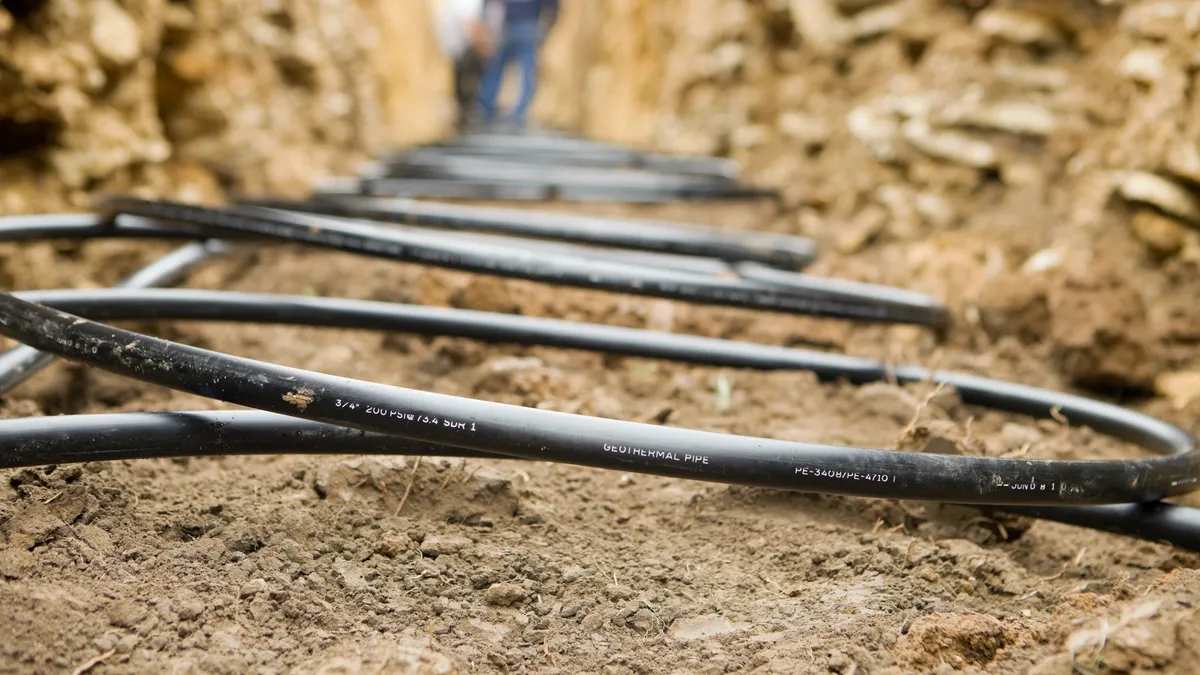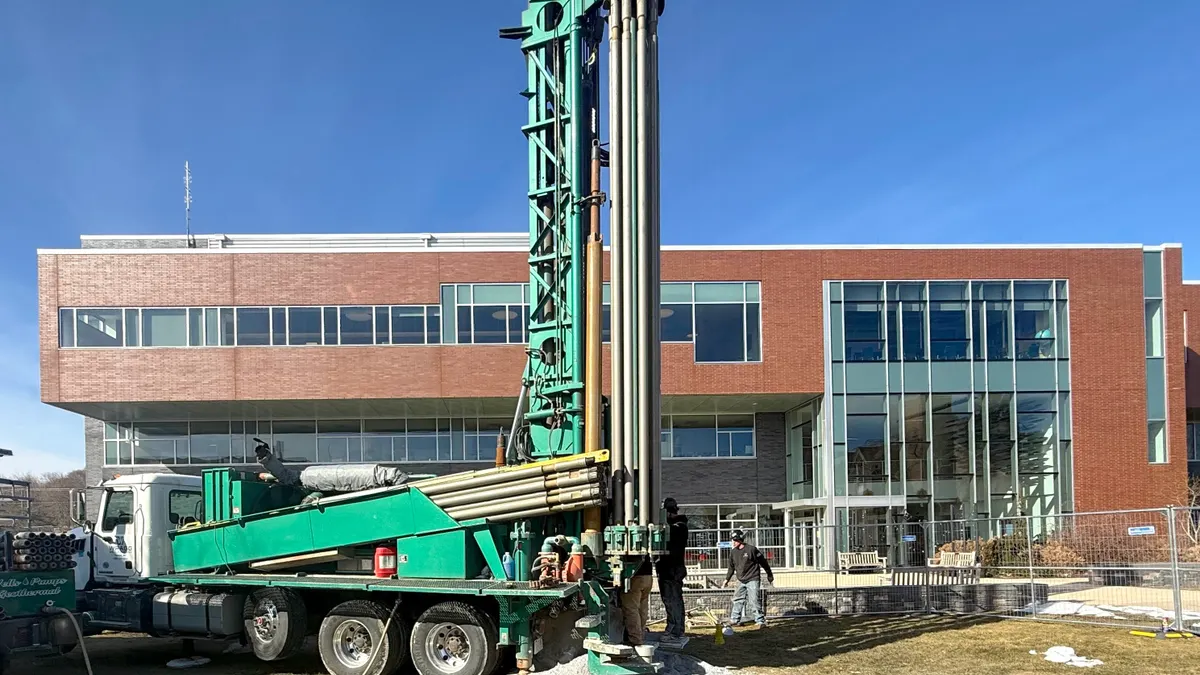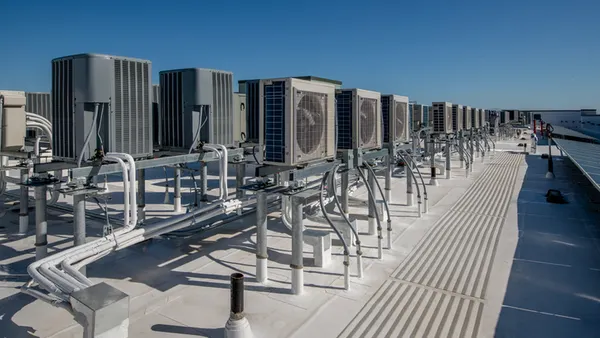A 2023 analysis by the Oak Ridge National Laboratory and the National Renewable Energy Laboratory found that installing geothermal heat pumps in about 70% of U.S. buildings could reduce current U.S. electricity demand by 15% annually, eliminate up to 7 billion metric tons of carbon-equivalent emissions through 2050 and potentially avoid the construction of 24,500 miles of new electricity transmission.
In the southern United States, where summer air conditioning demand often strains local grids, widespread geothermal heat pump adoption could reduce average building electricity consumption by up to 26%, the study found. Farther north, the technology can supplement or replace gas and oil boilers, cutting on-site carbon emissions by up to 78%.
Lower operational costs than traditional HVAC
These figures that point to the potential impact of geothermal heat pump installations come as no surprise to Scott Wieskamp, director of operations for Lincoln Public Schools in Nebraska. In the mid-1990s, Lincoln built six new schools: four buildings with geothermal heat pumps and two that run on traditional boiler-and-chiller HVAC systems. All six remain in service today. The Oak Ridge National Laboratory has been studying them since the early 2000s, as the installations make it easy to compare long-term climate control performance of the two approaches.
“It’s night and day when you compare those first geothermal schools’ energy consumption and total cost of energy” against the schools with boilers and chillers, said Wieskamp, who oversees the maintenance of Lincoln Public Schools buildings and grounds and supervises their custodial staff. The geothermal schools’ annual heating and cooling costs come to about 70 cents per square foot compared with about $1.50 per square foot at the two schools running on traditional HVAC systems, he said.
Over the years, the school system has converted all but those two school buildings — across a district that comprises 74 school buildings spanning nearly 8 million square feet — to be heated and cooled by geothermal heat pump systems, Wieskamp said. U.S. public school districts in Austin, Texas, and Boulder, Colorado use this technology, as do thousands of institutional, commercial and multifamily buildings and campuses across the country.
GHP systems, also known as ground-source heat pumps, geo-exchangers, or GHPs, transfer heat energy between underground reservoirs — which remain at relatively constant temperatures year-round — and conditioned buildings. They have three subsystems — a closed heat-collector loop that circulates fluid through an outdoor borefield to absorb or reject heat, heat pump units that concentrate and transfer heat into or out of the ground reservoir, and forced-air ducts or water pipes that directly heat or cool indoor spaces.
While geothermal climate control is efficient and reliable when properly designed, installed and operated, these problems do happen. For example, in Greenwich, Connecticut, one public middle school is running on a diesel-fired backup unit as district leaders mull over whether to replace a failing ground source system with a more carbon-intensive gas boiler. School officials have “acknowledged that the system was not used or maintained properly in the past and that it was designed incorrectly, all of which hastened its failure,” according to local media reports.
In ideal conditions, GHPs are several times more efficient than fossil-fuel and electric resistance heating systems because “there’s always energy in the ground, and you’re just moving it around,” rather than generating it, said Steve Zehr, a Chicago-based mechanical engineer with Grumman/Butkus. But they must be designed and installed property if they are to meet performance expectations and reduce building operation costs, he said. NREL’s research also underscores the importance of optimizing systems based on accurately analyzed demand, supply potential and regional geothermal resources, especially for large systems.
In interviews with Facilities Dive, Zehr, Wieskamp and other facilities managers shared what they have learned from designing and operating geothermal heat pump systems — and what facilities managers should consider before installing them.
- Borefield sizing and design: In Evanston, Illinois, Garrett-Evangelical Theological Seminary abandoned its GHP system after a few years of poor performance, said Zehr, whom the seminary hired to troubleshoot the system. The issue was an undersized borefield that couldn’t keep up with the seminary’s heating and cooling demand, Zehr said. “From what we’ve seen, the design engineer properly sized the borefield, but the installation contractor decided to drill fewer, deeper wells,” he said. Deeper wells can transfer and store more energy, but their actual performance depends on site-specific soil conditions that require a professional test bore to assess, he said.
- Space constraints: GHP borefields do not occupy as much space as commonly assumed, said Mark Nussbaum, principal at the Oak Park, Illinois-based Architectural Consulting Engineers. Nussbaum designed a GHP system for a Chicago-area congregation on a “postage-stamp”-sized lot, using extra-deep boreholes spaced closer than the 20-foot standard. Some contractors specialize in indoor borefields for severely space-constrained buildings, with holes drilled through the foundation, Nussbaum said. Since deeper wells have higher upfront costs, GHP systems may not be cost-effective for close-set buildings with high heating and cooling loads, he said.
- Retrofitting requirements: Older buildings with steam heat need to be retrofitted to accommodate GHPs, Nussbaum said. Because GHP systems run water at pressures too high for steam pipes, this work includes repiping and additional mechanical equipment that may increase project costs, he said.
- Backup or hybrid options: Properly designed GHPs perform well in winter and do not require gas or resistance-electric backup heat, said Lincoln Public Schools’ Wieskamp. But, where retrofitting is impractical or too costly, or in facilities with intense, round-the-clock heating and cooling needs, operators should consider dual-fuel hybrid GHP systems that “run on [backup fuel] maybe 10% of the time,” Nussbaum said. The hybrid system Nussbaum designed for the Evanston History Center in Illinois left the 19th-century mansion’s radiant heating system in place and “works like a charm even when it’s minus 10 [degrees] out,” said Kris Hartzell, director of facilities, visitor services and collections at the history center.
- Heat pump placement: Generally, centralized systems, which have fewer but higher-capacity heat pump chillers that collect ground loop fluid, concentrate heat, and distribute heated or cooled air or water throughout the building, are more cost-effective for larger buildings, Zehr said. Distributed systems, which have a larger number of lower-capacity heat pumps, make sense for heating and cooling smaller facilities, he said. Because they require more space, distributed systems may require “creative solutions” in retrofit scenarios, said Wieskamp, whose team has had to excavate new below-grade mechanical rooms to house heat pumps for older school buildings. There are no significant differences in reported performance and cost between centralized and distributed systems, NREL says.
- Heat pump make and performance: Properly installed borefields should last for many decades, Wieskamp said, but the heat pumps themselves can wear out in as little as 20 years, according to the DOE. In Colorado, the Boulder Valley School District has had “age- and manufacturer-related issues” with heat pumps installed about 15 years ago, despite the geothermal part of the system being “bulletproof,” said Travis Cook, the district’s HVAC manager.
- Drilling costs: Geothermal drilling costs vary considerably, Nussbaum said. Drilling in the Chicago area, where labor and expertise are in short supply, costs up to four times more than in Peoria, Illinois, he said. Drilling accounts for a significant share of total costs “and is often what kills these projects,” he added.
- Upfront expense and payback period: Geothermal systems have lower operating and maintenance costs but higher installation costs, Wieskamp said. He estimated that the upfront cost of Lincoln Public Schools’ systems would be 20% to 30% more than comparable gas boiler and chiller systems, but the lower ongoing costs of geothermal systems would offset that premium within 10 years. GHP users can shorten their payback periods by using less energy during their utilities’ peak demand windows, when rates are usually higher, he said. Inflation Reduction Act tax credits can help, too, especially for tax-exempt government and nonprofit organizations eligible for direct payments, Nussbaum said. Still, upfront costs give some would-be users pause: In Colorado, Boulder Valley School District outfitted two schools with GHPs in the past 15 years, but financial considerations led the district to drop similar plans for other schools, said Ghita Carroll, head of sustainability and energy for the district.












